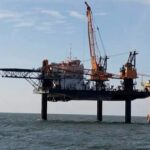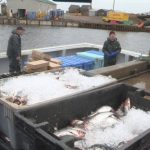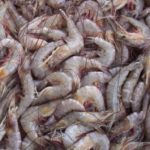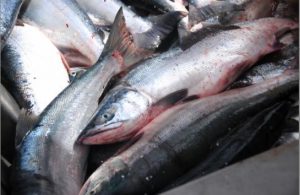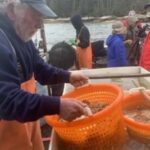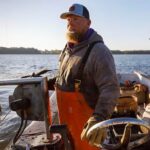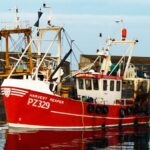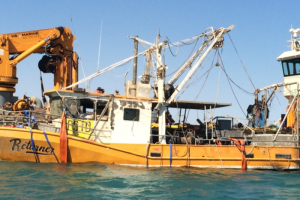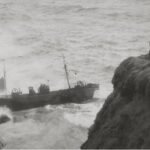Tag Archives: National Transportation Safety Board
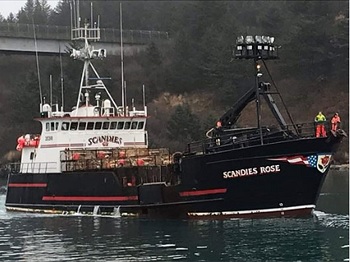
F/V Scandies Rose: NTSB to Hold Meeting to Determine Probable Cause for Sinking
The National Transportation Safety Board (NTSB) announced Thursday its plan to hold a public board meeting to determine the probable cause for the 2019 sinking of the fishing vessel Scandies Rose. The 130-foot Scandies Rose sank December 31, 2019 about 2.5 miles south of Sutwik Island, Alaska with the loss of five crew members. Two others were rescued. The loss of the Scandies Rose marked the worst accident to hit Alaska’s commercial fishing industry since the sinking of the F/V Destination with the loss of all six crew members in February 2017.,, The Coast Guard previously convened a Marine Board of Investigation concluding in March to consider evidence related to the accident. >click to read< 08:55

To honor our lost fishermen, we must act
Every time a Coast Guard crew embarks on a rescue mission to a commercial fishing vessel, we all want the same outcome – a successful rescue and safe return to shore. Maine communities know too well those outcomes vary. We rescued four fishermen in November 2018 after the Aaron & Melissa II sank 50 miles south of Rockland. Two years later, last November, we lost four fishermen when the Emmy Rose sank northeast of Provincetown. And a year ago this Saturday, Joe Nickerson and Christopher Pinkham perished when the Hayley Ann sank 47 miles southeast of Cape Elizabeth. >click to read< 08:14 More lobstermen in New England are wearing life jackets while they work – >click to read<

Falling Asleep on Watch-Crew Fatigue Led to the Grounding and Loss of F/V Freyja
The vessel was in the Bering Sea near Point Tebenkof, Unalaska Island, Alaska, when she grounded and remained stranded on the rocks. The four crewmembers abandoned the vessel and swam to a nearby Good Samaritan vessel. The vessel was considered a total loss, with damage estimates at $550,000. The NTSB determined that the probable cause of the grounding was the failure of the deckhand on watch to monitor the vessel’s track as a result of falling asleep due to an accumulated sleep deficit and the vessel owner’s lack of countermeasures to mitigate crewmember fatigue. >click to read< to read the NTSB report, >click here< 13:26
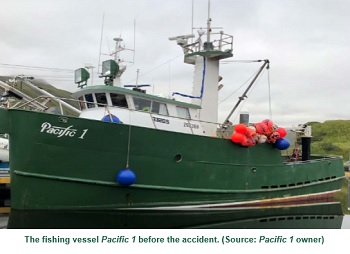
Decision to Keep Fishing Despite Flooding Led to Sinking
About 0330 local time on February 15, 2019, the commercial fishing vessel Pacific 1 was engaged in cod fishing in the Bering Sea near Kashega Bay, Unalaska Island, Alaska, when the vessel began to take on water at the stern. The five crewmembers abandoned the vessel and were rescued by the nearby Good Samaritan vessel Kona Kai. No crewmembers were injured in the accident, and an oil sheen was reported. The vessel sank and was considered a total constructive loss, valued at an estimated $720,000.,, The NTSB determined that the probable cause of the sinking was the captain’s decision to remain at sea with continuous flooding in the lazarette from an undetermined source, which accelerated,, more, >click to read< Read the report >here< 19:54

Admiralty and Maritime Law: Nearly 50% of Marine Accidents Involved Commercial Fishing Boats
According to data on CDC.gov, commercial fishing is one of the most hazardous occupations in the United States, with a fatality rate 29 times higher than the national average worker fatality rate.,, The CDC has found that the biggest risks to fishermen are vessel disasters, falls overboard and machinery on deck. >click to read< 08:48
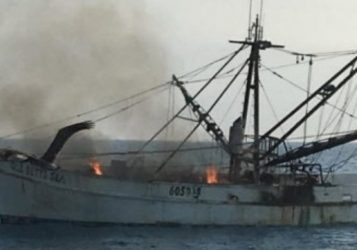
Mechanical Failure Blamed for Fire on Fishing Vessel
About 0545 on March 18, a rigman took the helm so that the captain could rest. About a half hour later, while the vessel was proceeding at “idle speed” (about 2.5 knots), the rigman heard something that sounded like a small “boom” or “heavy thud.” The captain returned to the wheelhouse when he heard the sound and told the rigmen to pull in the nets and gear. Lighting remained on and the vessel’s main engine continued to propel the boat. However, about a minute later, the vessel started shaking. >click to read< 08:15

What caused the F/V Destination to sink? Coast Guard to release findings on Sunday
The Coast Guard on Sunday will release results of its investigation into why, without a mayday call, the Seattle-based Destination sank in 2017 in Alaska’s deadliest crabbing accident in more than a decade. Over the years, Coast Guard investigative reports into fishing disasters have repeatedly spotlighted the hazards of one of the nation’s most dangerous industries, sometimes helping to push reforms but often falling short of bringing major change. All six of the Destination crew were lost on Feb. 11, 2017, and the report is expected to offer the most likely scenario for what happened on a chill day in the Bering Sea when freezing spray was thought to have frozen on the boat. The report also will offer safety recommendations to try to prevent such losses of life. >click to read<15:46

NTSB says clam tank flooding likely caused fatal sinking
Federal investigators have determined that the likely cause of the sinking of fishing boat off the coast of Nantucket in 2017 that claimed the lives of two crewmembers was flooding in one of the vessel’s clam tanks. The National Transportation Safety Board in its Feb. 6 report said although flooding in the Misty Blue’s port clam tank was the “probable cause” of the sinking, how the water got in remains undetermined. >click to read<15:50

Twenty-Five Foot Basking Shark Led to Fishing Vessel Capsize
The U.S. National Transportation Safety Board has released an investigation report into the sinking of the commercial fishing vessel Langley Douglas in September 2017, noting the presence of a 25-foot basking shark in the catch and the captain’s subsequent decision making. The 79-foot-long, 143-gross ton vessel developed a port list, capsized and subsequently sank 60 miles east of Cape Charles, Virginia. A U.S. Coast Guard helicopter rescued the five people on board. No injuries or pollution were reported. The Langley Douglas was valued at $1.95 million.,, At 0910 on September 11, 2017, the captain ordered the crew to haul in the net and prepare the main deck and hog pen area. The crew also placed scupper plates in front of the port and starboard freeing ports to prevent catch from going overboard. The captain told investigators that he remembered seeing the cod-end sensor flashing, >click to read<23:26

NTSB Says Icing Caused Fatal Sinking of FV Destination in Bering Sea, issues related Safety Alert
The National Transportation Safety Board has issued a marine accident brief >click to read<and a related safety alert>click to read< warning mariners of the dangers of icing following the agency’s investigation of the sinking of the fishing vessel Destination in the Bering Sea last February with the loss of all six crew members. The 110-foot, 196-gross ton, fishing vessel Destination sank in frigid, remote waters 2.6 miles northwest of St. George Island, Alaska, on February 11, 2017. >click to read<09:36
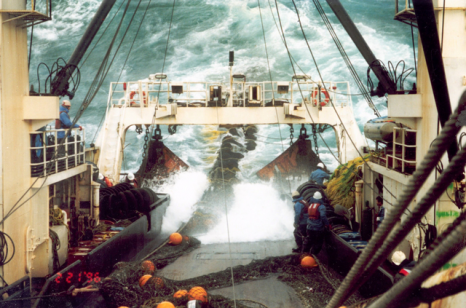
‘The truth needed to come out’: A decade after the sinking of the Alaska Ranger, a survivor changes his story
On the 10th anniversary of the sinking of the Seattle-based fishing vessel, a survivor and key witness says he left out part of the story — an incident he believes had grave consequences. Rodney Lundy has a story to tell. He says he should have told it a lot sooner. As the Seattle-based Alaska Ranger prepared to head out to the Bering Sea to fish for Atka mackerel, Lundy, an assistant engineer, says he saw trouble. It was the evening of March 21, 2008, and Lundy says crew had stacked bundles of netting around one of two air vents.,, Lundy wanted the gear moved. The conversation grew heated as fishmaster Satoshi Konno — leader of a small group of Japanese crew members — refused. >click to read<14:07
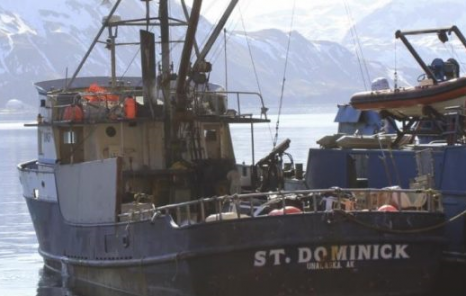
Fatigue the cause of fishing vessel’s grounding
On 6 March 2017, the uninspected commercial fishing vessel ‘St. Dominick’ grounded in Pumicestone Bay, Alaska. The engine room flooded within 10–20 minutes of the grounding, and the four crew abandoned the vessel a short time later. None of them were injured, and no pollution was reported, but the vessel, valued at $1.1 million, was deemed a constructive total loss. US NTSB issued an investigation report on the accident. >click to read< 13:02

NTSB: Lack of preparation, training a factor in death of 2 on Alaska crab boat
On December 6, 2016, the motor vessel Exito slipped below the surface of icy Dutch Harbor waters, never to be seen again. Aboard when it sank were two men, contractors for Trident Seafoods. Their bodies were never recovered. Now, over two years later, the National Transportation Safety Board has released a report detailing several factors that it says could have saved the two men. click here to read the story 16:53

F/V Misty Blue: Divers will look for missing fishing boat Thursday
The Coast Guard has suspended its search for the two fishermen who went missing after their boat sank off the coast of Nantucket, and because of the current weather conditions, State Police divers are waiting until Thursday to go into the water and confirm the location of the sunken vessel. click here to read the story 13:04
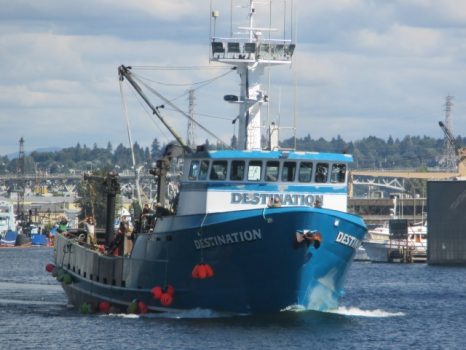
F/V Destination – Day 1: Investigation Hearing begins
In Seattle on Monday, the Coast Guard and the National Transportation Safety Board began two weeks of testimony into the sinking. Monday was spent questioning the ship’s owner, 68-year-old David Wilson. The experienced fisherman, who hired Captain Jeff Hathaway back in 1993, recounted documents recapping the safety drills and briefings given to all crew before the season began. Larry O’Grady, Raymond Vincler, Darrik Seibold, Charles Jones and Kai Hamik were all on board with Hathaway. All presumed lost. Earlier this summer, the U.S. Coast Guard icebreaker Healy spent days over the wreck and found the vessel sitting upright in 240 feet of water listing to the port. On Monday morning, Wilson was asked about maintenance issues — including a discussion, he had with the ship’s captain by phone while in Alaska. click here to read the story Todays proceedings can be reviewed click here, and the hearing restart at 09:00 tomorrow, using that link. 20:06
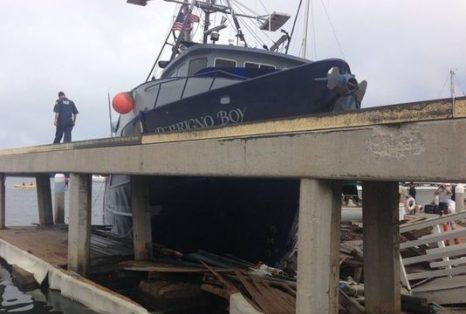
2 West Coast commercial fishing vessel mishaps included in NTBS Safer Seas Digest 2016
The National Transportation Safety Board cited two mishaps involving vessels around Ventura Harbor among 27 marine-related boating accidents as part of its Safer Seas Digest 2016. The agency’s annual report, released online Thursday, is part of an effort to help improve safety in the boating industry. “We hope that (the report) continues to help the marine industry discuss and address the safety issues confronting it,” said Robert Sumwalt, the NTSB’s acting chairman, in the 2016 Safer Seas Digest.The mishaps mentioned in the report include a July 29, 2015, collision in which the captain of a commercial fishing boat, Ferrigno Boy, lost control of the boat as it maneuvered near the Ventura Harbor Boatyard. The 70-foot-long squid boat hit the docks there. No one was injured in the accident. click here to read the story 14:22 To read the report click here
US Coast Guard convenes Marine Board of Investigation into loss of F/V Destination
 WASHINGTON- The U.S. Coast Guard has convened a Marine Board of Investigation into the loss of F/V Destination and its six crewmembers. A Marine Board of Investigation is the highest level of investigation in the Coast Guard. Upon completion of the investigation, the Board will issue a report to the commandant with the evidence collected, the facts established and its conclusions and recommendations. During the course of the MBI, panel members must decide: The factors that contributed to the accident, Whether there is evidence that any act of misconduct, inattention to duty, negligence or willful violation of the law on the part of any licensed or certificated person contributed to the casualty. Whether there is evidence that any Coast Guard personnel or any representative or employee of any other government agency or any other person caused or contributed to the casualty National Transportation Safety Board is participating alongside the Coast Guard in its investigation, but will produce an independent report with its own findings. Link 15:45
WASHINGTON- The U.S. Coast Guard has convened a Marine Board of Investigation into the loss of F/V Destination and its six crewmembers. A Marine Board of Investigation is the highest level of investigation in the Coast Guard. Upon completion of the investigation, the Board will issue a report to the commandant with the evidence collected, the facts established and its conclusions and recommendations. During the course of the MBI, panel members must decide: The factors that contributed to the accident, Whether there is evidence that any act of misconduct, inattention to duty, negligence or willful violation of the law on the part of any licensed or certificated person contributed to the casualty. Whether there is evidence that any Coast Guard personnel or any representative or employee of any other government agency or any other person caused or contributed to the casualty National Transportation Safety Board is participating alongside the Coast Guard in its investigation, but will produce an independent report with its own findings. Link 15:45
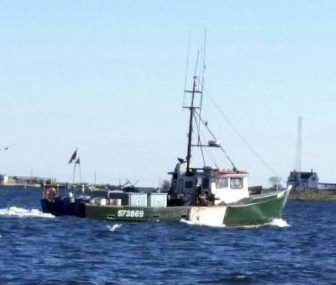
Bad hull, flooding led to fatal sinking of Orin C
The deadly sinking of the Gloucester-ported Orin C nearly 15 months ago probably was caused by structural problems with the vessel’s wooden hull and subsequent flooding, according to reports from the National Transportation Safety Board and Coast Guard released Thursday. The two reports detailed the marine tragedy that resulted in the drowning of 47-year-old Capt. David C. “Heavy D” Sutherland during the final stages of the Coast Guard’s rescue that saved crewmembers Rick Palmer and Travis Lane on the night of Dec. 3, 2015. Neither Palmer nor Lane could be reached Thursday for comment. The Coast Guard report did not recommend any changes to its training, rescue procedures or the equipping of its rescue vessels. That, however, does not mean it won’t make changes in the future, according to District 1 Deputy Commander Brad Kelly. “That is something the Coast Guard is always looking at in trying to determine what should be included into all of our rescue platforms,” Kelly said. “That is an ongoing process.” Continue reading the article here 21:01
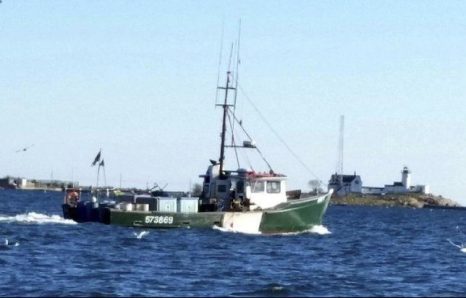
As anniversary nears, reports on deadly F/V Orin C sinking unfinished
Saturday will mark the one-year anniversary of the sinking of the Orin C and the death of Gloucester fisherman David “Heavy D” Sutherland, but the final federal reports on the deadly incident still will not be released until January. Representatives of the Coast Guard and the National Transportation Safety Board on Monday confirmed the new timetable for releasing the findings of the separate investigations and restated the government’s intention to release the reports simultaneously. “We were really pushing to have a completed report before the anniversary of the tragedy to help bring some closure up here,” said Lt. Karen Kutiewicz of the Coast Guard’s District 1 Headquarters in Boston. “That was our goal. Unfortunately, it’s not the reality.”The draft of the Coast Guard’s internal casualty investigation was completed earlier this year and forwarded during the summer to Washington, D.C., for review by officials at Coast Guard headquarters. In July, the NTSB said it expected to release the conclusions of its investigation “sometime in the fall.” An NTSB spokesman on Monday said the agency has not yet concluded its investigation and does not expect to have the final report until mid-January. Read the story here 09:01
NTSB Assesses U.S. Coast Guard’s Vessel Traffic Service System
 A safety study released Tuesday by the National Transportation Safety Board details 14 conclusions and 21 recommendations aimed at further reducing the risk of collisions, allisions, and groundings involving vessels operating within U.S. Coast Guard Vessel Traffic Service areas. The study, “An Assessment of the Effectiveness of the U.S. Coast Guard Vessel Traffic Service System” (NTSB/SS-16/01), focused on the performance of the Coast Guard’s VTS system, currently comprised of 12 VTS centers. The need for the study was driven by the investigation of six major commercial vessel accidents since the Coast Guard’s 2009 implementation of its “Vessel Traffic Service National Standard Operating Procedures Manual.” Information provided by the Coast Guard indicates collisions, allisions and groundings within VTS areas between 2010 and 2014 resulted in two fatalities, 179 injuries and more than $69 million in damage to vessels, facilities, infrastructure and the environment. Read the story here 11:07
A safety study released Tuesday by the National Transportation Safety Board details 14 conclusions and 21 recommendations aimed at further reducing the risk of collisions, allisions, and groundings involving vessels operating within U.S. Coast Guard Vessel Traffic Service areas. The study, “An Assessment of the Effectiveness of the U.S. Coast Guard Vessel Traffic Service System” (NTSB/SS-16/01), focused on the performance of the Coast Guard’s VTS system, currently comprised of 12 VTS centers. The need for the study was driven by the investigation of six major commercial vessel accidents since the Coast Guard’s 2009 implementation of its “Vessel Traffic Service National Standard Operating Procedures Manual.” Information provided by the Coast Guard indicates collisions, allisions and groundings within VTS areas between 2010 and 2014 resulted in two fatalities, 179 injuries and more than $69 million in damage to vessels, facilities, infrastructure and the environment. Read the story here 11:07
NTSB: No plans to salvage Fishing Vessel Orin C
 The National Transportation Safety Board confirmed today it will lead the investigation into last week’s sinking of the Orin C that cost the life of a Gloucester fisherman, but the agency has no plans to salvage the 51-foot vessel from the bottom of the Atlantic Ocean. Keith Holloway, an NTSB spokesman, said the investigation could take as long as 12 to 18 months to determine the probable cause of the Dec. 3 sinking that took the life of 47-year-old Gloucester fisherman David “Heavy D” Sutherland. “Information will be released as it becomes available,”,, Read the article here 12:05
The National Transportation Safety Board confirmed today it will lead the investigation into last week’s sinking of the Orin C that cost the life of a Gloucester fisherman, but the agency has no plans to salvage the 51-foot vessel from the bottom of the Atlantic Ocean. Keith Holloway, an NTSB spokesman, said the investigation could take as long as 12 to 18 months to determine the probable cause of the Dec. 3 sinking that took the life of 47-year-old Gloucester fisherman David “Heavy D” Sutherland. “Information will be released as it becomes available,”,, Read the article here 12:05
NTSB Provides New Details from El Faro Investigation
 The National Transportation Safety Board on Tuesday issued an update on its continuing investigation into the sinking of the El Faro cargo ship in the Atlantic Ocean near the Bahamas. Unlike the NTSB’s first report on El Faro investigation, which provided little to no new information on the accident, this new update offers a wealth of new information on a number of key areas in the investigation, including the safety and maintenance of the vessel, the ship’s propulsion, the ill-fated voyage and weather forecast, the last communication from the ship,,, Read the rest here 08:41
The National Transportation Safety Board on Tuesday issued an update on its continuing investigation into the sinking of the El Faro cargo ship in the Atlantic Ocean near the Bahamas. Unlike the NTSB’s first report on El Faro investigation, which provided little to no new information on the accident, this new update offers a wealth of new information on a number of key areas in the investigation, including the safety and maintenance of the vessel, the ship’s propulsion, the ill-fated voyage and weather forecast, the last communication from the ship,,, Read the rest here 08:41
Former investigator is convinced hull damage sank the F/V Arctic Rose
 In 2001, a remote-operated camera on the bottom of the Bering Sea captured ghostly images of the sunken Arctic Rose fishing vessel, including footage of a narrow, dark splotch along the hull. Coast Guard officers who investigated the April 2, 2001, sinking eventually concluded that the video showed only an area of peeled paint, and was of no consequence in a calamity they say was most likely the result of flooding through an open hatch door. But a former National Transportation Safety Board investigator initially assigned to the case came to a radically different view of what went wrong; this theory was never publicly disclosed. Read the rest here Video-Trial Graphics – Arctic Rose Sinking 09:23
In 2001, a remote-operated camera on the bottom of the Bering Sea captured ghostly images of the sunken Arctic Rose fishing vessel, including footage of a narrow, dark splotch along the hull. Coast Guard officers who investigated the April 2, 2001, sinking eventually concluded that the video showed only an area of peeled paint, and was of no consequence in a calamity they say was most likely the result of flooding through an open hatch door. But a former National Transportation Safety Board investigator initially assigned to the case came to a radically different view of what went wrong; this theory was never publicly disclosed. Read the rest here Video-Trial Graphics – Arctic Rose Sinking 09:23
Coast Guard: Investigations underway in 110-foot cutter collision that sank fishing vessel
 “Though they’ll be looking into the same incident, the three investigations have different purposes and are clear and distinct from each other” said Captain Mike Zamperini, deputy commander, Coast Guard Sector San Juan. “Public service requires transparency and, if warranted, accountability, which we will ensure through these investigations.” Read the rest here 10:18
“Though they’ll be looking into the same incident, the three investigations have different purposes and are clear and distinct from each other” said Captain Mike Zamperini, deputy commander, Coast Guard Sector San Juan. “Public service requires transparency and, if warranted, accountability, which we will ensure through these investigations.” Read the rest here 10:18







